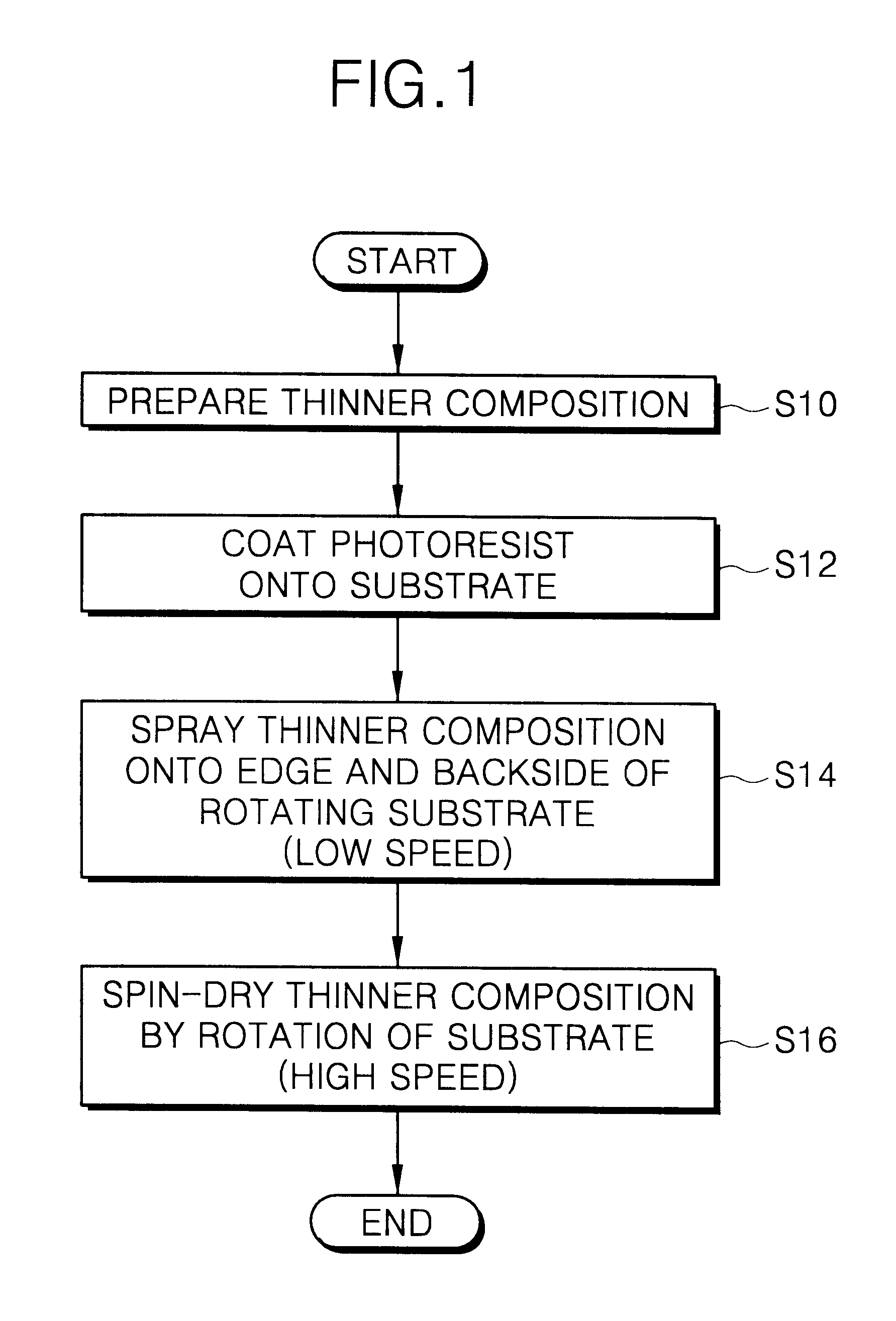Thinner composition and method of stripping a photoresist using the same
a technology of photoresist and composition, applied in the field of thinner composition and to a method of stripping a photoresist using the same, can solve the problems of photoresist material inevitably becoming coated onto the backside of the wafer, photolithography process suffers a process failure,
- Summary
- Abstract
- Description
- Claims
- Application Information
AI Technical Summary
Benefits of technology
Problems solved by technology
Method used
Image
Examples
example 1
PGMEA, GBL and EEP were placed in a vessel and mixed to thereby prepare a thinner composition. The thinner composition was adjusted to include about 73% by weight of the PGMEA, 2% by weight of the GBL, and 25% by weight of the EEP. The viscosity of the thus prepared thinner composition was 1.3 cp (measured in a thermostat at a temperature of about 25.degree. C.).
example 2
PGMEA, GBL and EEP were placed in a vessel and mixed to thereby prepare a thinner composition. The thinner composition was adjusted to include 54% by weight of the PGMEA, 10% by weight of the GBL, and 36% by weight of the EEP. The viscosity of the thus prepared thinner composition was 1.3 cp (measured in a thermostat at a temperature of about 25.degree. C.).
example 3
PGMEA, PGME and EEP were placed in a vessel and mixed to thereby prepare a thinner composition. The thinner composition was adjusted to include 60% by weight of the PGMEA, 30% by weight of the PGME and 10% by weight of the EEP. The viscosity of the thus prepared thinner composition was 1.4 cp (measured in a thermostat at a temperature of about 25.degree. C.).
PUM
 Login to View More
Login to View More Abstract
Description
Claims
Application Information
 Login to View More
Login to View More - R&D
- Intellectual Property
- Life Sciences
- Materials
- Tech Scout
- Unparalleled Data Quality
- Higher Quality Content
- 60% Fewer Hallucinations
Browse by: Latest US Patents, China's latest patents, Technical Efficacy Thesaurus, Application Domain, Technology Topic, Popular Technical Reports.
© 2025 PatSnap. All rights reserved.Legal|Privacy policy|Modern Slavery Act Transparency Statement|Sitemap|About US| Contact US: help@patsnap.com



